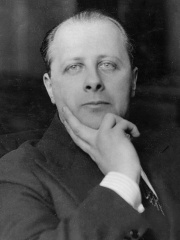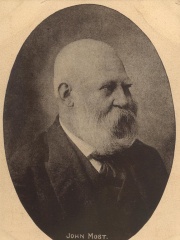WRITER
Glückel of Hameln
1646 - 1724

 Glückel of Hameln
Glückel of Hameln
Glückel of Hameln (Yiddish: גליקל בת ר' יהודה לייב האַמיל; also spelled Glückel, Glüeckel, Gllckl Hamel or Glikl of Hamelin; also known as Glikl bas Judah Leib) (c. 1646 – September 19, 1724) was a German Jewish businesswoman and diarist. Written in her native tongue of Western Yiddish over the course of thirty years, her memoirs were originally intended to be an ethical will for her children and future descendants. Glückel's diaries are the only known pre-modern Yiddish memoirs written by a woman. The Memoirs of Glückel of Hameln provide an intimate portrait of German-Jewish life between the late seventeenth and early eighteenth centuries and have become an important source for historians, philologists, sociologists, literary critics, and linguists. Read more on Wikipedia
Her biography is available in 20 different languages on Wikipedia (up from 18 in 2024). Glückel of Hameln is the 3,536th most popular writer (up from 3,724th in 2024), the 3,658th most popular biography from Germany (up from 3,768th in 2019) and the 216th most popular German Writer.
Memorability Metrics
Page views of Glückel of Hameln by language
Among WRITERS
Among writers, Glückel of Hameln ranks 3,536 out of 7,302. Before her are Carlo Rosselli, Robert Holdstock, Antero de Quental, William Ernest Henley, Glen Cook, and Song Yu. After her are John Osborne, Simonas Daukantas, Fernando del Paso, Torben Ulrich, Pietro Carrera, and Oskar Maria Graf.
Most Popular Writers in Wikipedia
Go to all RankingsCarlo Rosselli
1899 - 1937
HPI: 59.08
Rank: 3,530
Robert Holdstock
1948 - 2009
HPI: 59.08
Rank: 3,531
Antero de Quental
1842 - 1891
HPI: 59.08
Rank: 3,532
William Ernest Henley
1849 - 1903
HPI: 59.07
Rank: 3,533
Glen Cook
1944 - Present
HPI: 59.07
Rank: 3,534
Song Yu
298 BC - 222 BC
HPI: 59.07
Rank: 3,535
Glückel of Hameln
1646 - 1724
HPI: 59.07
Rank: 3,536
John Osborne
1929 - 1994
HPI: 59.07
Rank: 3,537
Simonas Daukantas
1793 - 1864
HPI: 59.05
Rank: 3,538
Fernando del Paso
1935 - 2018
HPI: 59.05
Rank: 3,539
Torben Ulrich
1928 - 2023
HPI: 59.05
Rank: 3,540
Pietro Carrera
1573 - 1647
HPI: 59.05
Rank: 3,541
Oskar Maria Graf
1894 - 1967
HPI: 59.04
Rank: 3,542
Contemporaries
Among people born in 1646, Glückel of Hameln ranks 17. Before her are Hortense Mancini, Charles Plumier, Alexandre Exquemelin, Paul Hermann, Frederick I, Duke of Saxe-Gotha-Altenburg, and Élisabeth Marguerite d'Orléans. After her are Pierre Le Pesant, sieur de Boisguilbert, Johann Theile, Nicolas de Fer, and Jean Hardouin. Among people deceased in 1724, Glückel of Hameln ranks 12. Before her are Princess Eleonore Juliane of Brandenburg-Ansbach, Ernst Ludwig I, Duke of Saxe-Meiningen, Bartolomeu de Gusmão, Marie of Lorraine, Edward Low, and Benedetto Luti. After her are Ernest Frederick I, Duke of Saxe-Hildburghausen, Johann Theile, and Jack Sheppard.
Others Born in 1646
Go to all RankingsHortense Mancini
POLITICIAN
1646 - 1699
HPI: 63.91
Rank: 11
Charles Plumier
BIOLOGIST
1646 - 1704
HPI: 62.55
Rank: 12
Alexandre Exquemelin
WRITER
1646 - 1707
HPI: 62.12
Rank: 13
Paul Hermann
PHYSICIAN
1646 - 1695
HPI: 61.03
Rank: 14
Frederick I, Duke of Saxe-Gotha-Altenburg
POLITICIAN
1646 - 1691
HPI: 60.06
Rank: 15
Élisabeth Marguerite d'Orléans
POLITICIAN
1646 - 1696
HPI: 59.34
Rank: 16
Glückel of Hameln
WRITER
1646 - 1724
HPI: 59.07
Rank: 17
Pierre Le Pesant, sieur de Boisguilbert
ECONOMIST
1646 - 1714
HPI: 58.40
Rank: 18
Johann Theile
COMPOSER
1646 - 1724
HPI: 57.58
Rank: 19
Nicolas de Fer
GEOGRAPHER
1646 - 1720
HPI: 55.83
Rank: 20
Jean Hardouin
RELIGIOUS FIGURE
1646 - 1729
HPI: 55.55
Rank: 21
Others Deceased in 1724
Go to all RankingsPrincess Eleonore Juliane of Brandenburg-Ansbach
NOBLEMAN
1663 - 1724
HPI: 62.93
Rank: 6
Ernst Ludwig I, Duke of Saxe-Meiningen
POLITICIAN
1672 - 1724
HPI: 62.57
Rank: 7
Bartolomeu de Gusmão
INVENTOR
1685 - 1724
HPI: 62.06
Rank: 8
Marie of Lorraine
NOBLEMAN
1674 - 1724
HPI: 60.94
Rank: 9
Edward Low
PIRATE
1690 - 1724
HPI: 60.94
Rank: 10
Benedetto Luti
PAINTER
1666 - 1724
HPI: 60.88
Rank: 11
Glückel of Hameln
WRITER
1646 - 1724
HPI: 59.07
Rank: 12
Ernest Frederick I, Duke of Saxe-Hildburghausen
POLITICIAN
1681 - 1724
HPI: 58.89
Rank: 13
Johann Theile
COMPOSER
1646 - 1724
HPI: 57.58
Rank: 14
Jack Sheppard
SOCIAL ACTIVIST
1702 - 1724
HPI: 56.08
Rank: 15
In Germany
Among people born in Germany, Glückel of Hameln ranks 3,660 out of 7,253. Before her are Diana Damrau (1971), Oscar Goßler (1875), Erich Salomon (1886), Princess Elisabeth of Saxe-Altenburg (1826), Karl Josef Becker (1928), and Otto Gessler (1875). After her are Christian Oliver (1972), Friedrich von Ingenohl (1857), Sybille Schmitz (1909), Adolf II, Prince of Schaumburg-Lippe (1883), Conrad of Wittelsbach (1125), and Petra Schürmann (1933).
Others born in Germany
Go to all RankingsDiana Damrau
SINGER
1971 - Present
HPI: 59.09
Rank: 3,654
Oscar Goßler
ATHLETE
1875 - 1953
HPI: 59.09
Rank: 3,655
Erich Salomon
PHOTOGRAPHER
1886 - 1944
HPI: 59.08
Rank: 3,656
Princess Elisabeth of Saxe-Altenburg
POLITICIAN
1826 - 1896
HPI: 59.08
Rank: 3,657
Karl Josef Becker
RELIGIOUS FIGURE
1928 - 2015
HPI: 59.08
Rank: 3,658
Otto Gessler
POLITICIAN
1875 - 1955
HPI: 59.07
Rank: 3,659
Glückel of Hameln
WRITER
1646 - 1724
HPI: 59.07
Rank: 3,660
Christian Oliver
ACTOR
1972 - 2024
HPI: 59.07
Rank: 3,661
Friedrich von Ingenohl
MILITARY PERSONNEL
1857 - 1933
HPI: 59.07
Rank: 3,662
Sybille Schmitz
ACTOR
1909 - 1955
HPI: 59.06
Rank: 3,663
Adolf II, Prince of Schaumburg-Lippe
POLITICIAN
1883 - 1936
HPI: 59.06
Rank: 3,664
Conrad of Wittelsbach
RELIGIOUS FIGURE
1125 - 1200
HPI: 59.06
Rank: 3,665
Petra Schürmann
ACTOR
1933 - 2010
HPI: 59.05
Rank: 3,666
Among WRITERS In Germany
Among writers born in Germany, Glückel of Hameln ranks 216. Before her are Sophie von La Roche (1730), Justus Jonas (1493), Johann Ernst Glück (1652), Johann Most (1846), Paul Fleming (1609), and Sylvia Nasar (1947). After her are Oskar Maria Graf (1894), Herman Grimm (1828), Barthold Heinrich Brockes (1680), Elia Levita (1469), Brigitte Hamann (1940), and Erich Weinert (1890).
Sophie von La Roche
1730 - 1807
HPI: 59.68
Rank: 210
Justus Jonas
1493 - 1555
HPI: 59.67
Rank: 211
Johann Ernst Glück
1652 - 1705
HPI: 59.62
Rank: 212
Johann Most
1846 - 1906
HPI: 59.34
Rank: 213
Paul Fleming
1609 - 1640
HPI: 59.32
Rank: 214
Sylvia Nasar
1947 - Present
HPI: 59.26
Rank: 215
Glückel of Hameln
1646 - 1724
HPI: 59.07
Rank: 216
Oskar Maria Graf
1894 - 1967
HPI: 59.04
Rank: 217
Herman Grimm
1828 - 1901
HPI: 59.04
Rank: 218
Barthold Heinrich Brockes
1680 - 1747
HPI: 59.00
Rank: 219
Elia Levita
1469 - 1549
HPI: 58.94
Rank: 220
Brigitte Hamann
1940 - 2016
HPI: 58.87
Rank: 221
Erich Weinert
1890 - 1953
HPI: 58.87
Rank: 222





















































